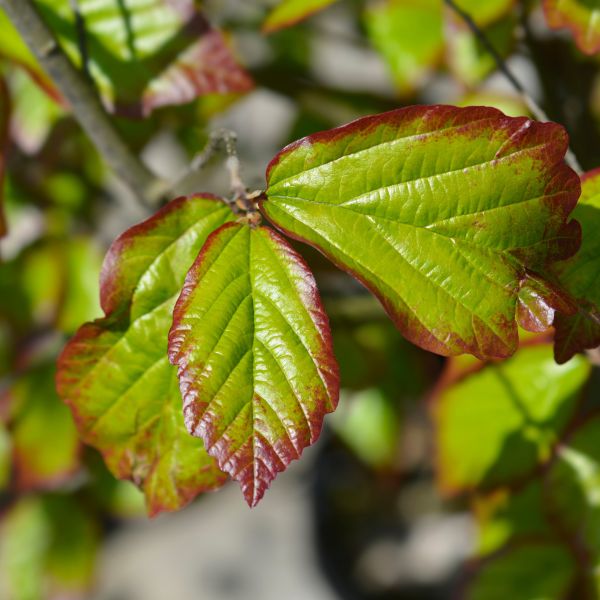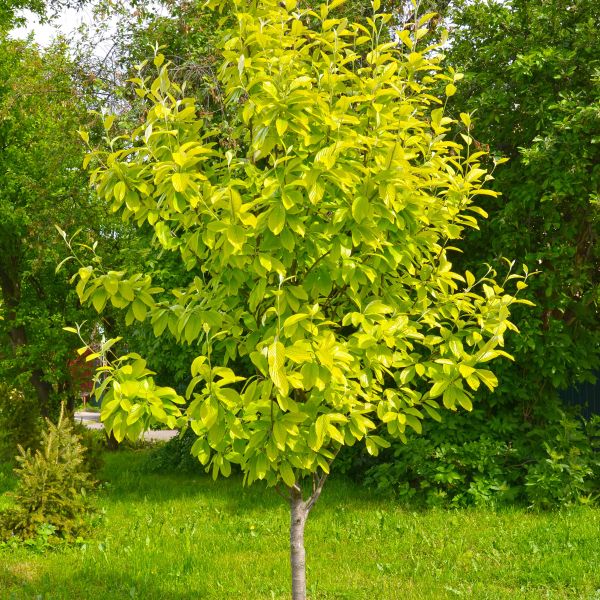

Persian Spire Persian Ironwood
Parrotia persica 'JLColumnar'
85 reviews
Persian Spire Persian Ironwood
Parrotia persica 'JLColumnar'
85 reviews
- Slow-growing tree with a compact, upright form, making it ideal for small yards or gardens
- Unique, ornamental foliage with stunning color changes throughout the seasons
- Tolerant of various soil types and conditions, making it easy to maintain
- Recommended by landscape designers for optimal fit in real yards
$54.00
$78.00
30% Off
- Ships to in 7-10 Days
- Free Shipping Over $150
- Plant Arrival Guarantee
- In Stock
- Free Plant Consult
$200 - Landscape-Approved: Every Plant We Sell Comes With Design Expertise Behind It
2.5 Gallon 3-4 Feet
We are sorry, product is currently out of stock due to seasonal availability. Please check the "Related plants available in your area" section below
Not just beautiful - intentionally selected by ShrubHub's 3D landscape design team to fit real-world spaces and maximize yard potential.
Why Persian Spire Persian Ironwood?
The Persian Spire Persian Ironwood (Parrotia persica 'JLColumnar') is a popular tree among gardeners and landscapers for its slender and compact columnar form. It grows up to 20 feet tall and 10 feet wide, making it a perfect choice for small gardens and urban spaces. Its leaves turn reddish-orange in fall, adding vibrant color to the landscape. The Persian Spire is also tolerant of urban pollution and drought, making it a low-maintenance tree to grow.
Sunlight
The Persian Spire Persian Ironwood tree prefers full sun exposure.
Watering
The watering requirement for Persian Spire Persian Ironwood is moderate to regular watering. It is important to keep the soil evenly moist, especially during the hotter months. However, it is essential to avoid overwatering as it can lead to root rot.
Fertilizing
The fertilizer requirement for Persian Spire Persian Ironwood is not specified within a 40-word limit. You may need to refer to specific horticultural guidelines or consult a gardening expert for accurate information regarding the fertilizer needs of this
Persian Spire Persian Ironwood is a beautiful deciduous tree that grows tall and thin. Its magnificent fall color makes it a show-stopper in any landscape, and it's a great option for creating vertical interest. The following are some salient facts about this tree:
Persian Spire Persian Ironwood tree takes little care and almost no pruning. Water the tree often during its first several years of growth, especially if you live in a hot, dry climate. This tree, once established, can survive with very little watering. Fertilizing the tree once yearly in the spring is also recommended for optimal growth.
The best condition for this tree is organically rich, well-drained soil. It does well in both sandy and loamy soils as well as clay. Poor drainage, though, might cause root rot, so it's best to avoid those places when planting.
The climate needs of a Persian Spire Persian Ironwood tree can be met in a variety of locations. The majority of the United States falls within USDA hardiness zones 5-8, where it thrives. This tree does better in full sun than in part shade, but it will still grow in some shade.
A stunning addition to any garden, the Persian Ironwood tree stands out for its unique form. Its thin, upright form makes it a great candidate for use as a focal point or accent tree in a landscaped area. As autumn approaches, the tree's foliage puts on a colorful show of orange, red, and yellow. The tree's bark is another appealing aspect, with a smooth, grayish appearance that works all through the seasons. In conclusion, the Persian Spire Persian Ironwood is a great plant for both aesthetics and practicality
Plant Information:
| Botanical Name: | Parrotia persica 'JLColumnar' |
| USDA Zones: | 5 - 8 |
| Water: | Meoderate |
| Exposure: | Full Sun |
| Soil Needs: | Well Drained |
| Mature Height: | 20 - 25 feet |
| Mature Spread: | 8 - 10 feet |





Pollination Info
Pollination Information for Persian Spire Persian Ironwood (Parrotia persica 'JLColumnar')
The Persian Spire Persian Ironwood is a self-pollinating tree, meaning that it does not rely on cross-pollination from other trees to produce fruit or seeds. However, cross-pollination may increase yield and improve fruit quality.
The tree produces small flowers in late winter to early spring, before its leaves emerge. The flowers are hermaphroditic, meaning they have both male and female reproductive organs.
Pollination occurs when pollen from the male reproductive organs (anthers) is transferred to the female reproductive organs (stigma). This can happen through wind pollination or via insects such as bees.
The resulting fruit is a small, woody capsule that contains one to two seeds. These seeds can be planted to grow new trees.
Overall, while the Persian Spire Persian Ironwood is capable of self-pollination, it can benefit from cross-pollination to increase yield and improve fruit quality.
FAQ
Persian Spire Persian Ironwood (Parrotia persica 'JLColumnar') FAQ
1. What is the Persian Spire Persian Ironwood?
The Persian Spire Persian Ironwood is a cultivar of the Parrotia persica tree, known for its narrow, columnar habit and striking foliage.
2. What are the plant's characteristics?
The Persian Spire Persian Ironwood grows up to 25-30 feet tall and 10-12 feet wide, with a narrow and upright habit. Its leaves have a unique and attractive blend of burgundy, orange, and green colors, and turn a brilliant red, orange, and yellow in the fall. The tree produces small, reddish-purple flowers in late winter or early spring, preceding the leaves.
3. What are the growing conditions for the Persian Spire Persian Ironwood?
The tree thrives in full sun to partial shade and prefers well-drained soil that is moist but not waterlogged. It is tolerant of different soil types and pH levels, and is relatively drought-tolerant once established. It is hardy to USDA zones 4-8.
4. How do I plant the Persian Spire Persian Ironwood?
Plant the tree in a hole that is two to three times wider than the root system, with the top of the root ball level with the ground. Water thoroughly after planting and add a layer of mulch around the base of the tree to help retain moisture and regulate soil temperature.
5. How do I care for the Persian Spire Persian Ironwood?
Water regularly during the first few years after planting, especially during times of drought. Prune the tree in late winter or early spring to maintain its shape and remove dead or damaged branches. Fertilize in early spring with a balanced, slow-release fertilizer.
6. Are there any pests or diseases that affect the Persian Spire Persian Ironwood?
The tree is relatively pest-resistant but may be susceptible to some diseases, including powdery mildew, cankers, and leaf spots. Proper planting and care can help prevent these issues.
Planting & Care
Planting Persian Spire Persian Ironwood
- Choose a location with well-drained soil and plenty of sunlight.
- Dig a hole twice as wide and just as deep as the root ball of the tree.
- Place the tree in the hole and backfill the soil ensuring that there are no air pockets.
- Water the tree deeply after planting.
- Apply a layer of mulch around the base of the tree to retain moisture and reduce weeds.
Caring for Persian Spire Persian Ironwood
- Water the tree deeply once a week during the growing season. Allow the soil to dry out between waterings.
- Fertilize the tree once a year in the spring with a balanced fertilizer.
- Prune the tree in the late winter or early spring to remove any dead or damaged branches and to shape the tree.
- Protect the tree from pests and diseases by monitoring regularly and applying appropriate treatments if necessary.
- Monitor for any signs of stress such as wilting or yellowing leaves and take appropriate action to remedy the situation.
With proper planting and care, Persian Spire Persian Ironwood can be an attractive and low maintenance addition to any landscape.
Check Out These Verified Customer Reviews:
Customer Reviews
4.8 out of 5 based on 85 reviews
Thank you! Your review has been submitted.
Beautiful item, looks amazing in my garden.
I couldn't be happier with the Persian Spire Persian Ironwood. It's a high-quality item worth the investment.
I was impressed with the Persian Spire Persian Ironwood tree I ordered. The item arrived in great condition and looks beautiful. The quality exceeded my expectations. Overall, a great shopping experience with prompt shipping.
Item has been added to your cart.


